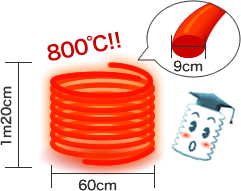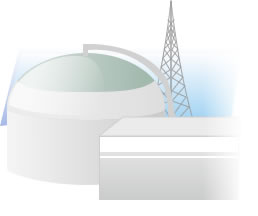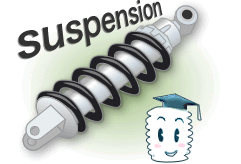
Episode 18: Very Large “Springs"
Hello everyone.
Welcome to 2009! I will continue this year as well with the introductions of springs and technology! I hope you will look forward to them.
This time, I would like to introduce you to very large "springs." The first thing that I think you are asking yourself is "just how big are these springs?"
Well…I'll tell you!
Initially, the thickness of steel wire that is coiled is 9 cm. It is very thick. This thick metal is heated at high temperatures (higher than 800oC) until it becomes red hot. And when becoming soft and malleable it is coiled.
The diameter of the coiled spring is 60 cm and the length of the spring is 1 m 20 cm.

If you remember the last time I talked about the small springs that fit into the tips of ballpoint pens (to press the metallic ball), you might be surprised that there are such large springs too!
Now, I suppose you are asking yourself… "well…just where are such large springs used?"

It does not move a bit even if a person pushes on it.
Such large springs are used in nuclear power plants. These are used as valves to allow high-temperature, high-pressure steam to escape outside when it exceeds a certain level.
These springs must be replaced every three years, even if they are not broken. That means they are used to maintain the safety of the power plant. We rarely see these large springs in our daily life.
While the type of spring is slightly different, comparatively large springs we are usually able to see are located near the wheels on trains. These springs are used for the train's suspension system.
Such springs are hidden behind a cover on the latest trains, but you can still see these springs on slightly older trains.

These large springs have a diameter of between 10 cm and 15 cm. Some are even about as large as 20 cm.
Thanks to these springs, we can ride trains comfortably.
Next time you have a chance to ride a train, take a look at one.
That's it for now. Next time, I'll introduce you to large plates. What's that? Plates? How can plates be related to springs? Keep an eye out for the next one!
See you next time!
Written by Banekko (a child of spring)




